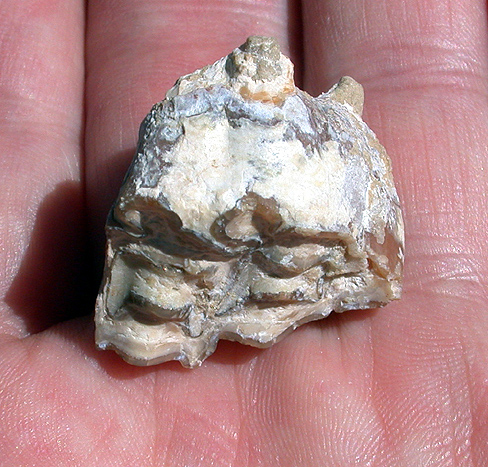
| Please Note--I observed, encountered, all fossil vertebrates imaged here already weathered out of the middle Miocene Barstow Formation in Fossil Bone Basin during occasional hikes with a Nikon CoolPix 995 digital camera through the bone-bearing badlands; photographs later processed with Photoshop (black background added, plus additional image tweaks). |

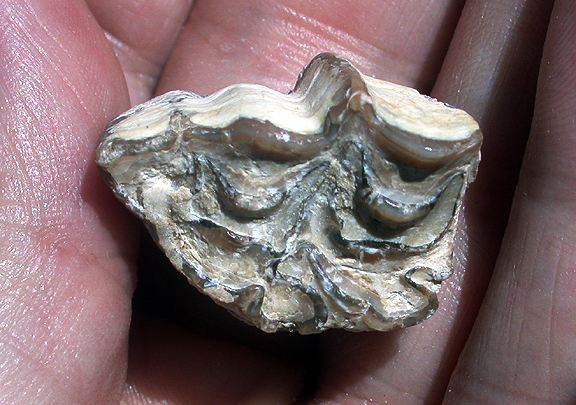
|
Two views of the same upper cheek tooth from an extinct three-toed horse, called Scaphohippus sp.--whose rather common to abundant skeletal elements in the Barstow beds were formerly assigned to the genus Merychippus--spotted in badlands eroded from the youngest sedimentary deposits in the middle Miocene Barstow Formation, Mojave Desert, California; that means that the specimen is 15 to 13.4 million years old; the grinding surface is 24 millimeters (about an inch) across. Identified by Dr. Xiaoming Wang, Curator Vertebrate Paleontology, Natural History Museum of Los Angeles. (Genus identification is mine). |
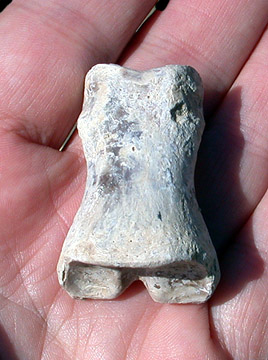 |
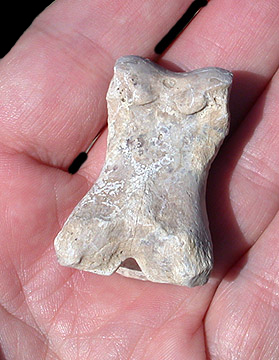 |
|
Both sides of the same proximal phalanx (one of the toe bones) spotted in badlands eroded from the youngest sedimentary deposits (Upper Member) in the middle Miocene Barstow Formation, Mojave Desert, California; that means that the horse phalanx is 15 to 13.5 million years old. The specimen is 40 millimeters long. It's from an extinct three-toed horse called Scaphohippus sp., whose rather common to abundant skeletal elements in the Barstow beds were formerly assigned to the genus Merychippus. Identified by Dr. Xiaoming Wang, Curator Vertebrate Paleontology, Natural History Museum of Los Angeles. (Genus identification is mine). |
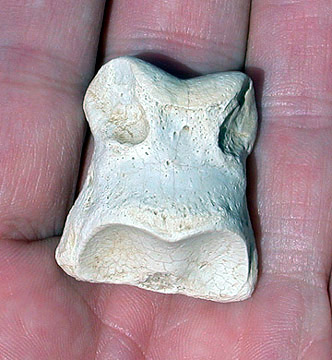 |
 |
|
Both sides of the same middle phalanx (one of the toe bones) spotted in badlands eroded from the youngest sedimentary deposits (Upper Member) in the middle Miocene Barstow Formation, Mojave Desert, California. It was observed in the same general area as the horse phalanx, above--in sedimentary beds 15 to 13.4 million years old. The specimen is 28 millimeters. As in the phalanx above, it's from an extinct three-toed horse. Scaphohippus sp., a genus formerly assigned to Merychippus. Identified by Dr. Xiaoming Wang, Curator Vertebrate Paleontology, Natural History Museum of Los Angeles. (Genus identification is mine). |
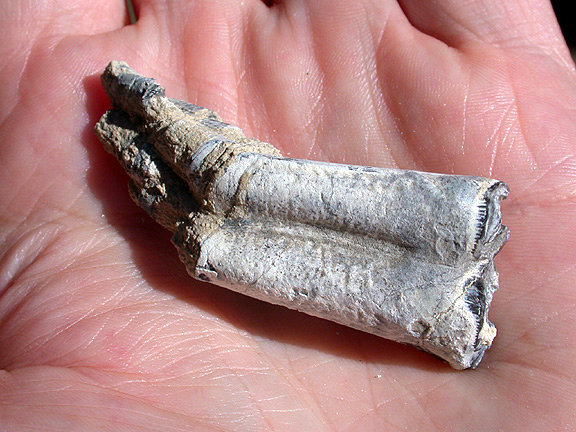
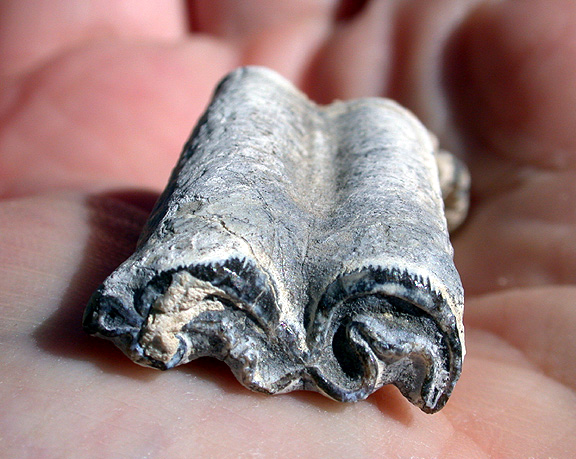
|
Two views of the same lower cheek tooth from an extinct three-toed horse, Middle Member of the middle Miocene Barstow Formation, Fossil Bone Basin, Mojave Desert, California. Top image shows a portion of the root still attached; bottom perspective is a closeup of the grinding surface, which is 20mm across. Scaphohippus sp. 16.3 to 15 million years old. Identified by Dr. Xiaoming Wang, Curator Vertebrate Paleontology, Natural History Museum of Los Angeles. (Genus identification is mine). |
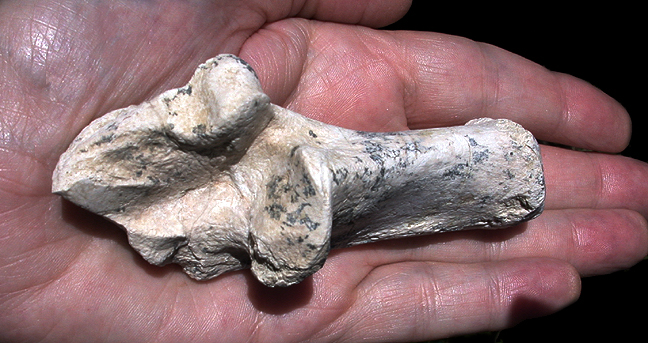
| A camel calcaneum--in humans, the heel bone; but in camels and other ungulates, such as deer and horses, this same bone lies within the hock region, that major articulating joint situated directly below the rear lower limb bone (tibia); ungulates walk on their toes with the heel well off the ground. 111mm long. Upper Member of the middle Miocene Barstow Formation. 15 to 13.4 million years old. |
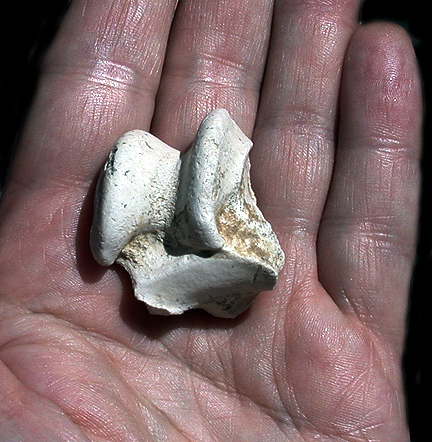 |
 |
|
Two different photographs of the same astragalus (ankle bone--it articulates with the lower portion of the rear leg bone, the tibia) from an extinct three-toed horse. Scaphohippus sp. Upper Member of the Barstow Formation. View at left is 23mm across at the flattened area at the base, pointed toward bottom of the image. 15 to 13.4 million years old. Identified by Dr. Xiaoming Wang, Curator Vertebrate Paleontology, Natural History Museum of Los Angeles. (Genus identification is mine). |
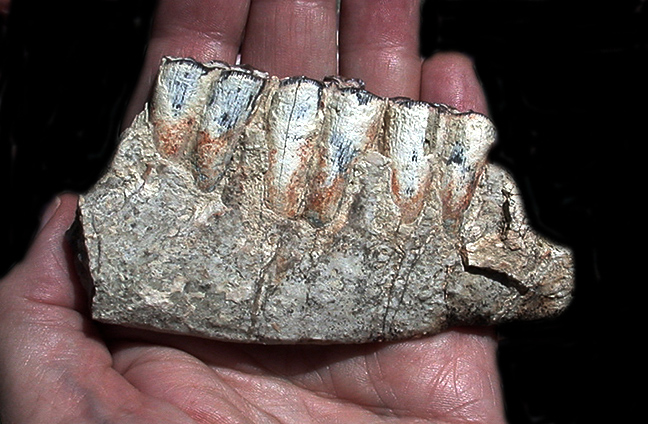
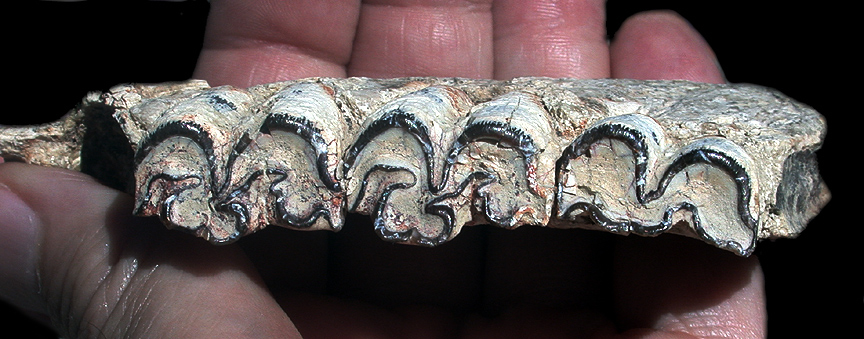
|
Two perspectives of the same lower jaw segment with cheek teeth from an extinct three-toed horse; Middle Member of the Barstow Formation. Top view of specimen is 95mm across. 16.3 to 15 million years old. Identified by Dr. Xiaoming Wang, Curator Vertebrate Paleontology, Natural History Museum of Los Angeles. |
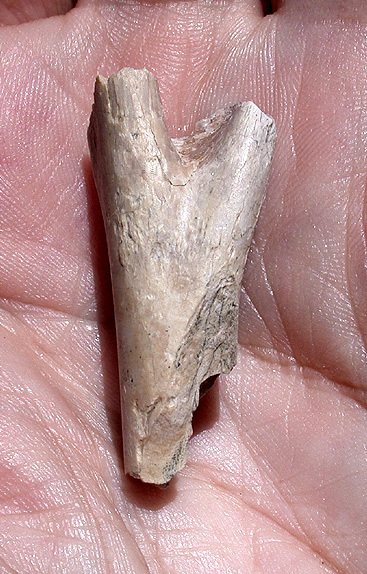
| This is a horn fragment from a pronghorn, 35mm. long. Upper Member of the middle Miocene Barstow Formation. 15 to 13.4 million years old. |
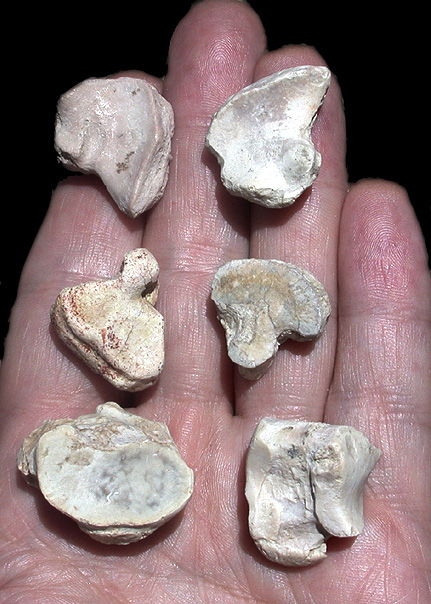
|
An assortment of various foot bones from an extinct three-toed horse, Scaphohippus sp. They're called carpals, from the carpus area in the front limbs, analogous to human wrist bones. For perspective, specimen at lower left is 25mm across. Except for left center specimen (Middle Member, 16.3 to 15 million years), all are from the Upper Member of the Barstow Formation, 15 to 13.4 million years old. Identified by Dr. Xiaoming Wang, Curator Vertebrate Paleontology, Natural History Museum of Los Angeles. (Genus identification is mine). |
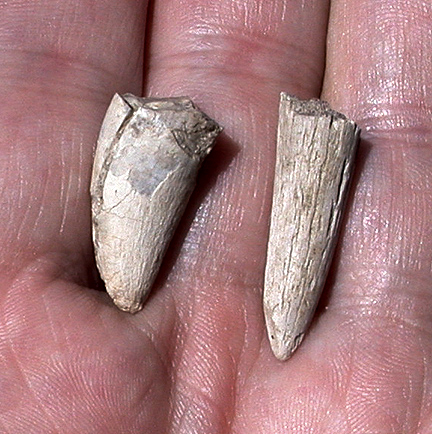
|
Left to right: tips of a pronghorn horns. For perspective, specimen at right is 27mm long; from the Upper Member of the middle Miocene Barstow Formation, Mojave Desert, California. Both 15 to 13.5 million years old. Identified by Dr. Xiaoming Wang, Curator Vertebrate Paleontology, Natural History Museum of Los Angeles. |
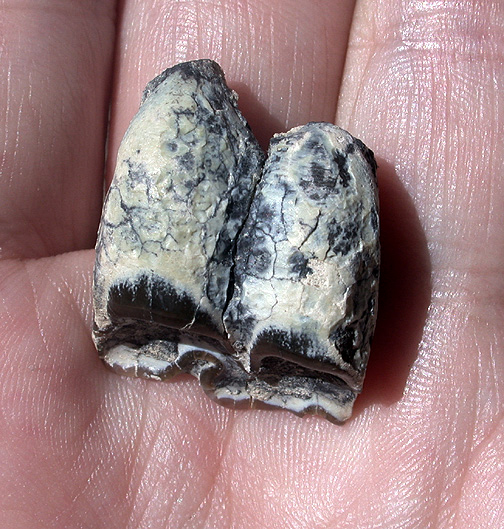
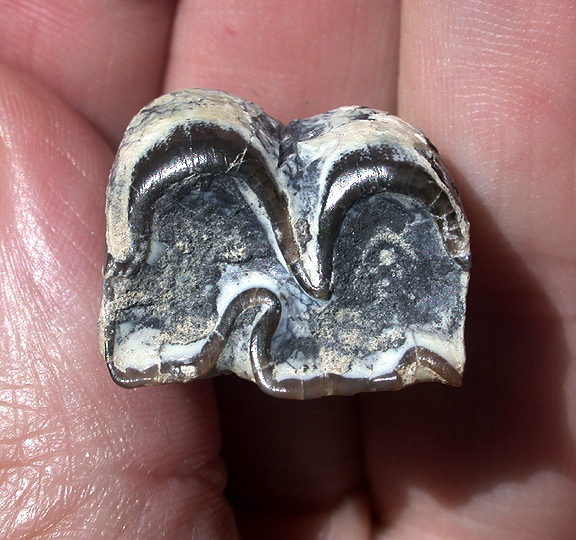
|
Two views of the same lower cheek tooth from an extinct three-toed horse, Scaphohippus sp.; Middle Member of the middle Miocene Barstow Formation. Grinding surface at bottom is 20mm across. 16.3 to 15 million years old. Identified by Dr. Xiaoming Wang, Curator Vertebrate Paleontology, Natural History Museum of Los Angeles. (Genus identification is mine). |
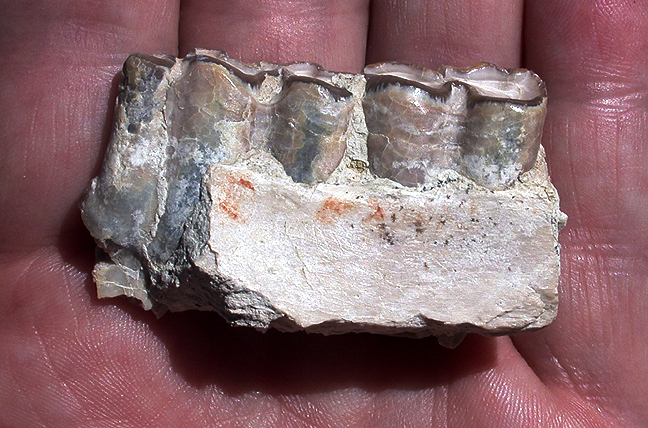
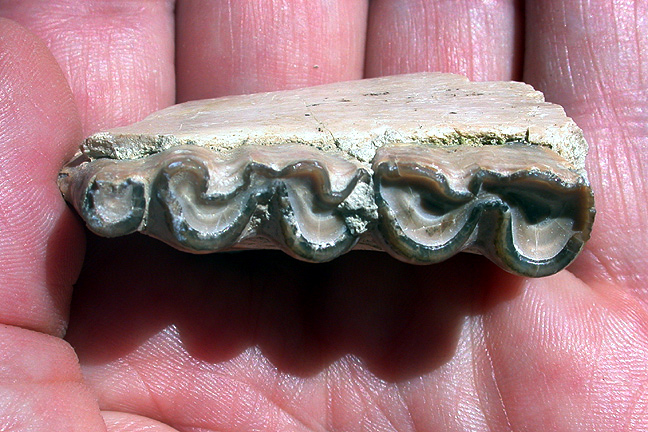
|
Two photographs of the same lower jaw segment with cheek teeth from an extinct three-toed horse, Scaphohippus sp. Top view is 48mm across. From the Middle Member of the Barstow Formation. 16.3 to 15 million years old. Identified by Dr. Xiaoming Wang, Curator Vertebrate Paleontology, Natural History Museum of Los Angeles. (Genus identification is mine). |